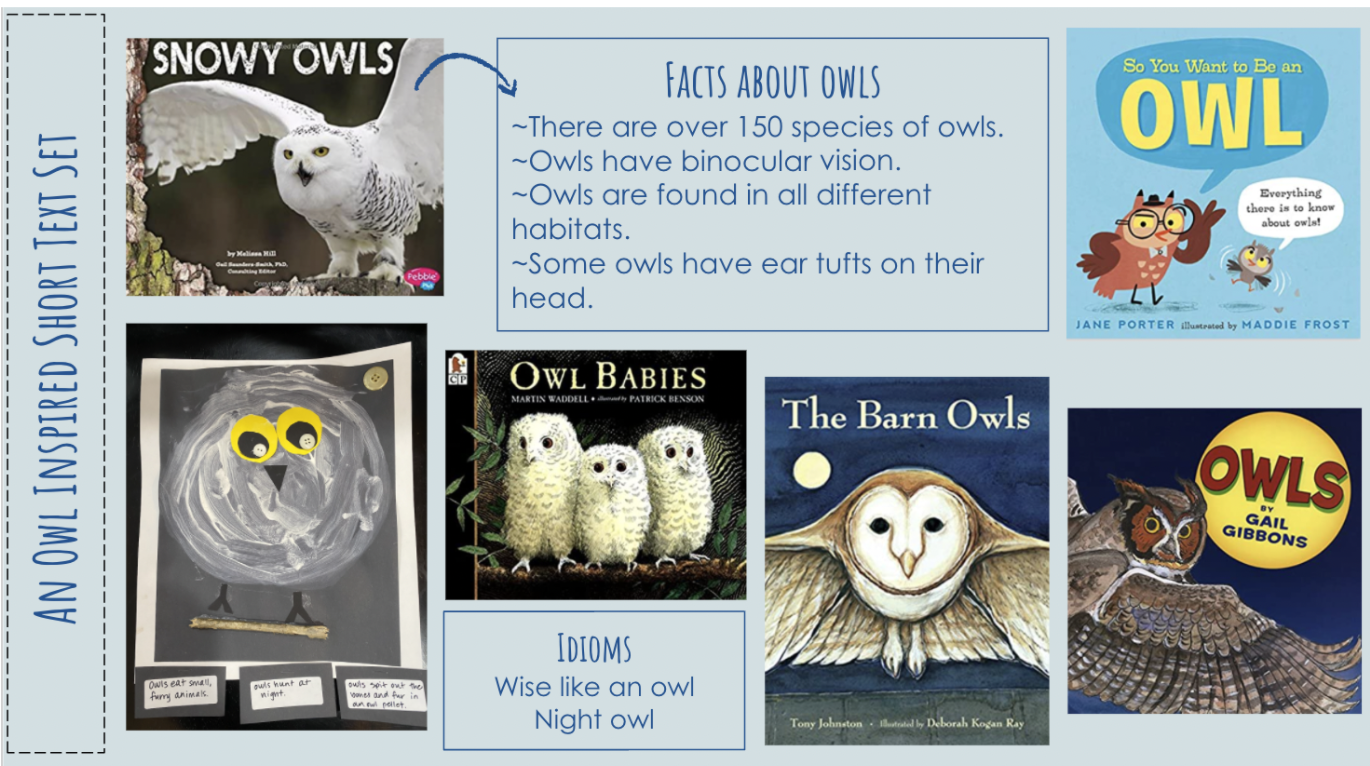Written by Julie Wright & Elizabeth Keim
One way to create a short text set is to explore a particular topic. We recommend picking something you, or your students (or both!), are particularly interested in. Once you start looking for resources, you will be surprised by how many things there are to find. By using short texts, you can expose your students to a variety of text types all in the name of learning about something fascinating.
Elizabeth is a birder and she spends most of the Spring in Central Park being amazed by the migrating warblers. In the winter she has been known to be on the lookout for Snowy Owls. Once she walked a long way on a beach in Eastern Long Island with some friends toward something that looked like a bleach bottle and eventually, as she got closer, discovered it was actually a Snowy Owl snoozing on a log. You may have read about or seen the post last year when a Snowy Owl was spotted in Central Park. It was the first one recorded in NYC in 130 years!
When students and teachers inquire about a topic, then spend time curating resources to fuel that curiosity or interest, there’s a good chance that new knowledge and understanding about that topic will grow. In addition, reading, writing and talking volume will increase too.
If you liked our Short Texts at Your Fingertips: Field Guides we think you’ll appreciate this connection we’re making to a topic that we enjoy —> OWLS! It’s so much fun to take a topic and text you love and expanding it into a short text set.
TRY THIS
Step 1
We start this text set with the NYTimes article about the first Snowy Owl to be seen in Central Park in 130 years. This could be read independently by upper elementary children and read aloud to younger ones. What’s fun about this NYTimes Article about Snowy Owls is that there are other short texts tucked all across the article including photos and captions that showcase the snowy owl’s adventures. Dive into the article and consider:
Orienting students to the features of a news article
Byline
Date
Structure of a news article
Asking some questions that could get students talking about the article and about snowy owls
What is this article about? Why is it being written? Who is the intended audience?
Is there a photo, caption, graphic, or link to other information that helps you read, interpret and comprehend the text?
What important details (data, facts, information) are shared in the article?
Step 2
Talk to students about some vocabulary words associated with birds, specifically the Snowy Owl. Some to consider are:
Migration and migratory
Nocturnal versus diurnal
Mammal
Wing, wing span, flight, and range
Take a look at a map of the Snowy Owl’s range. Here’s a Snowy Owl Range Map which is a nice example with lots of great bird information. You could use this resource to:
Define range
Teach students about map features
FURTHER STEPS
After digging into all of these sources, you and your students might want to learn more about Snowy Owls. There are some great resources to explore such as:
And now that everyone knows a bit more about Snowy Owls, maybe you explore some beautiful picture books that explore different types of owls. Start by reading both of these books aloud, noting that one is fiction and the other is nonfiction. Create a two-column anchor chart or give students a chance to draw a Venn diagram to compare and contrast the two short texts. Ask:
What are the differences between fiction and non-fiction?
How did Jane Yolan build suspense in Owl Moon?
Note: The owl in Owl Moon, by Jane Yolan, is a Great Horned Owl.
GOING DEEP & WIDE
Looking for more titles and short text types that add to and expand your text set? Check out these titles:
STAY TUNED!
More about short texts and short text sets coming soon!



